LoRa Stable Diffusion is a highly effective and efficient way to improve the stability and reach of wireless communication networks. This technology utilizes LoRa models that are specially designed to enhance the performance of stable diffusion networks. In this comprehensive guide, we will cover everything from the basics of LoRa technology to how it can be used to augment stable diffusion. We will also dive deep into the various types of LoRa models that are available, as well as vital considerations when incorporating them into your stable diffusion network. Additionally, we will explore real-life case studies highlighting the efficacy of LoRa in stable diffusion and analyze whether utilizing LoRa models assures superior results. Lastly, we will discuss the future of LoRa technology in stable diffusion and how it can revolutionize wireless communication networks.
Grasping the Basics of LoRA
LoRA, which stands for Low-Rank Adaptation, is a technology that enables the quick fine-tuning of diffusion models using low-rank adaptation techniques. In simple terms, the LoRA training model simplifies the process of training Stable Diffusion models on different concepts, such as specific characters or styles. These trained LoRA models can be exported and utilized by others for their own generation purposes.
The Functionality of LoRa in Stable Diffusion
Stable Diffusion models have gained popularity in the field of machine learning due to their ability to generate high-quality images and text. However, a major drawback is their large file size, making it challenging for users to manage and maintain a collection of these models on their personal computers. This is where LoRA comes in as a training technique, allowing for fine-tuning of Stable Diffusion models while keeping file sizes more manageable.
The Role of LoRa in Augmenting Stable Diffusion
LoRA models are smaller versions of Stable Diffusion models that apply smaller modifications to standard checkpoint models. As a result, LoRA models have significantly reduced file sizes ranging from 2 to 500 MBs, compared to the larger checkpoint files. This offers a favorable balance between file size and training power, making LoRA models an appealing solution for users with extensive model collections.

Navigating Through Various LoRa Models for Stable Diffusion
Character LoRa specializes in generating unique styles for traditional Chinese attire, while Style LoRa tailors concept generation to user preferences. Concept LoRa enables artist-inspired artwork generation, enriching the user experience with a stable diffusion web UI. Each LoRa model caters to specific characters or portraits of the joker, offering diverse options for stable diffusion.
Overview of Character LoRa
Character LoRa training images encompass a substantial number of training images and offer a sweet spot size for a specific character generation. It features a specific character image generation technique, with an extension that facilitates the generation of new clothes for characters. Using character LoRa, the feel of a character can be captured in the generated artwork. The capabilities of Character LoRa make it an indispensable tool for artists and designers, enhancing their own generations.
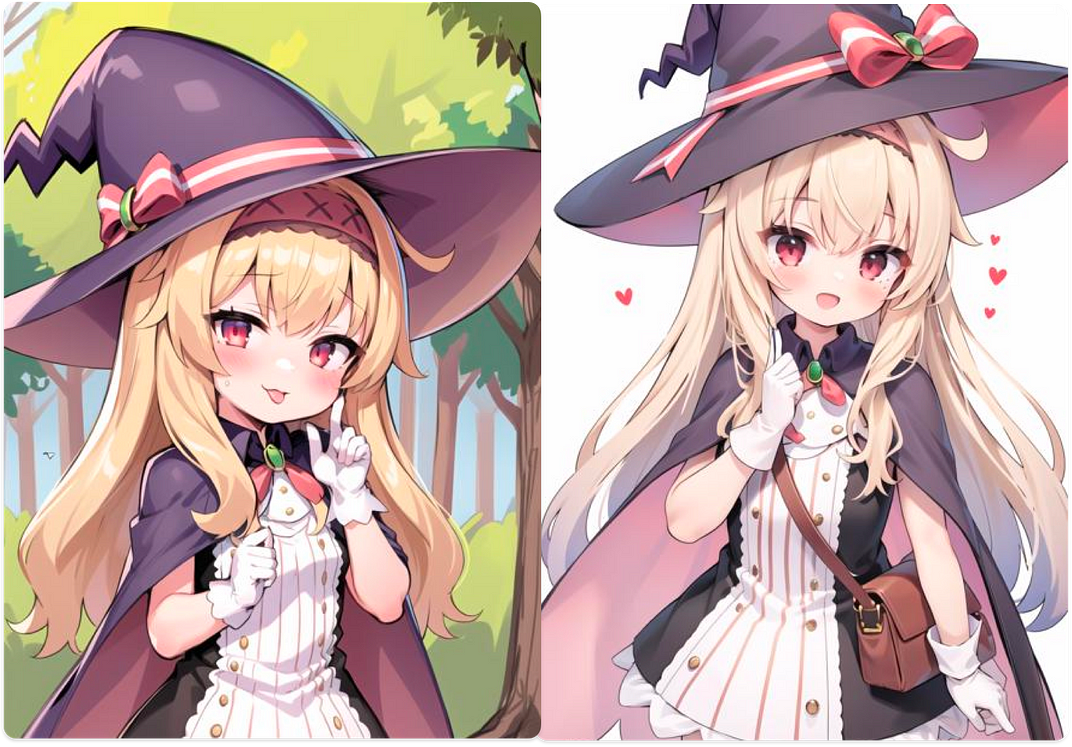
Overview of Style LoRa
Style LoRa’s training method yields high-quality, distinct style generation while optimizing model files for manageable sizes. This training power enables the creation of specific artwork styles, introducing a unique feel to the generated artwork. Additionally, Style LoRa’s accurately model the original artwork’s specific style. The integration of NLP terms like ‘generate button’, ‘checkpoint model’, and ‘installed textual inversion’ enhances the understanding of Style LoRa’s functionality.

Overview of Concept LoRa
Incorporating a comprehensive guide, the Concept LoRa encompasses different checkpoints in the model. Its training images cover a wide range of specific concepts and result in the generation of specific artistic style models. The Concept LoRa folder includes a large collection of specific style training data, and its model files facilitate the generation of very specific item images, harnessing the power of negative prompt for enhanced results.
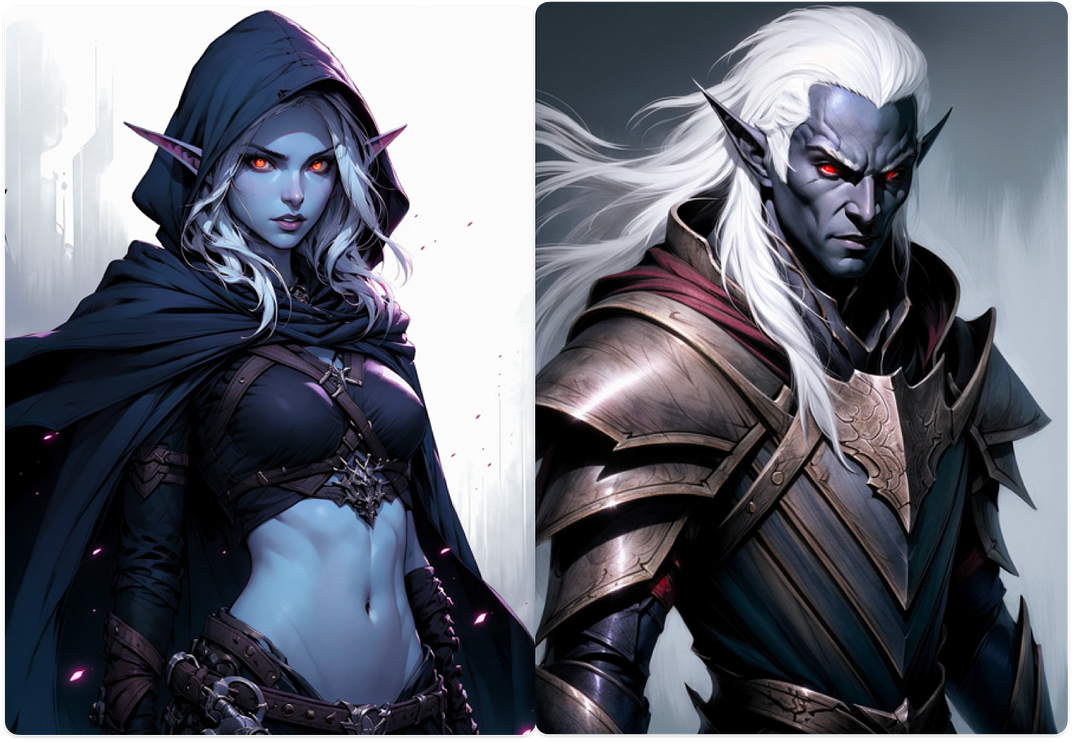
Steps to Incorporate LoRa Models with Stable Diffusion
Preparing the environment for LoRa models involves installing textual inversion, enabling the generation of unique style artwork. Accessing and activating LoRa models requires a specific lora keyphrase, resulting in improved image generation for stable diffusion. Incorporating LoRa models ensures specific style generation, enhancing the process of stable diffusion.
Preparing the Environment for LoRa Models
Installing textual inversion for LoRa models is crucial for enhancing the generation of unique style artwork. Utilizing a specific lora keyphrase triggers the creation of specific style images, ensuring efficiency. Accessing the lora tab provides a comprehensive guide for integrating LoRa models, while the lora extension facilitates the use of different checkpoints for specific style generation. This preparation process is essential for the seamless integration of LoRa models into stable diffusion.
Btw, you can use models by novita.ai, no need to download models, no GPU limits.
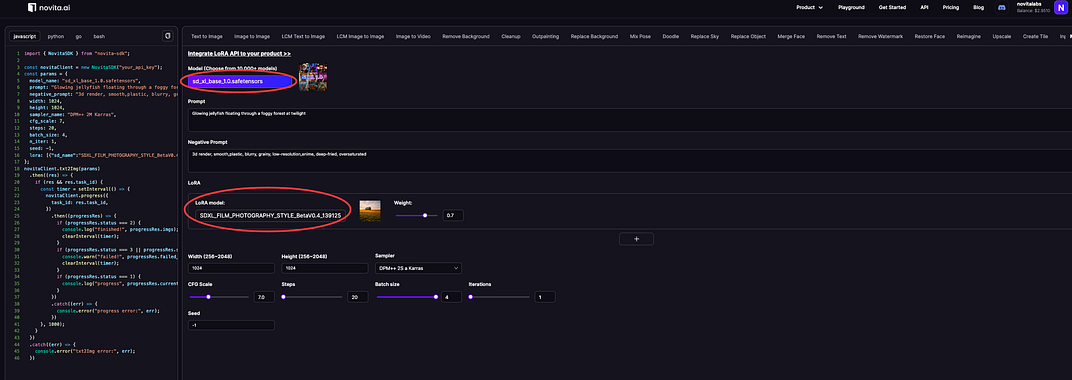
Accessing and Activating LoRa Models
Accessing and activating LoRa models triggers the generation of specific style images through a lora keyphrase. The lora folder access provides a wide range of specific style training data. Once activated, LoRa models produce very specific item images, offering a substantial number of training images for stable diffusion. LoRa models create a stable diffusion model extension for specific style artwork, resulting in unique and high-quality generations.
With novita.ai online demo, you can directly select desired loRA model.

Generating Outputs using LoRa Models
Facilitating the generation of high-quality images, LoRa models enable stable diffusion of artistic style. This results in manageable file sizes for image generation and substantial training power. Additionally, LoRa models allow the generation of unique styles within a specific concept. The utilization of checkpoint models with installed textual inversion enhances the quality of own generations using LoRa files, effectively capturing the negative prompt. The hugging face extension further augments the capability to generate diverse artistic outputs.
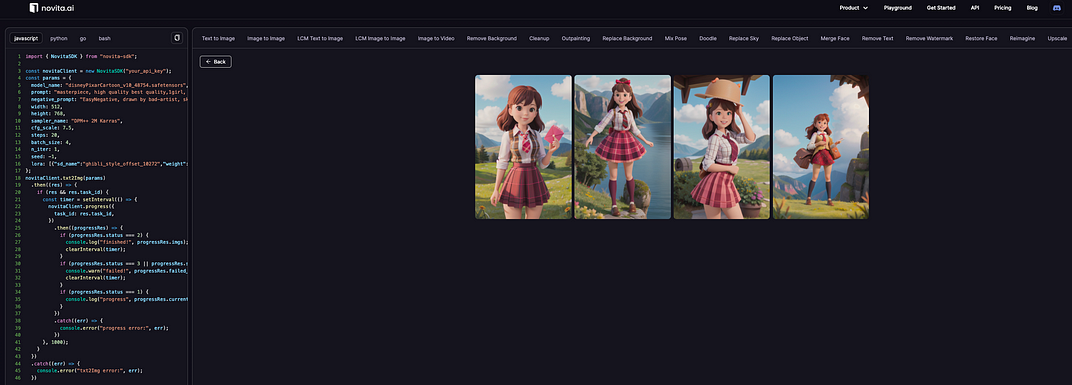
Vital Considerations when Utilizing LoRa in Stable Diffusion
When employing LoRa in stable diffusion, the training technique becomes pivotal. It’s essential to carefully consider the file size during the utilization of LoRa in stable diffusion. The incorporation of trigger words plays a significant role in the stable diffusion process with LoRa. Moreover, utilizing stable diffusion web UI elements when employing LoRa is crucial. Additionally, a stable diffusion model’s reference images wield a substantial influence on the final outcome.
Understanding the Implication of Pose LoRa
Pose LoRA offers the ability to generate various positions and movements that are often challenging or impossible to achieve through traditional prompt engineering methods.
Stance LoRA models focus on the character’s posture rather than their style or attributes. For instance, when applying a pose LoRA model to a humanoid figure, it generates multiple postures like running, leaping, or sitting, while keeping the features, clothing, and overall style of the model unchanged.
Using pose LoRAs provides a convenient way to have more control over your generated content without the need for complex solutions like ControlNet. By making a few simple adjustments to the original prompt, this type of LoRA enables the creation of dynamic and captivating scenarios. It empowers users to explore new possibilities and create engaging content with ease.
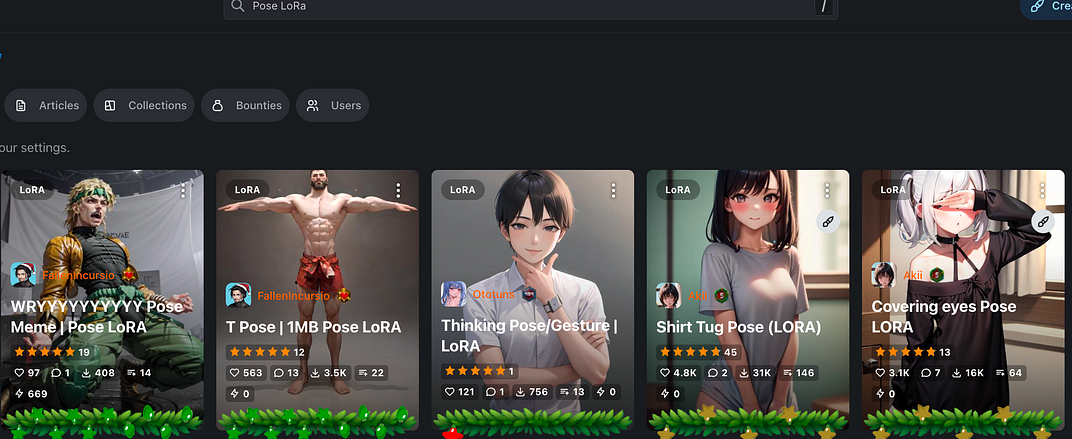
Decoding the Importance of Clothing LoRa
With this type of LoRA model, you can easily and quickly change the clothing of any character, whether it be contemporary or historical in style.
The versatility of clothing LoRA models is remarkable, as they can be applied to any kind of character. With just one model, you can incorporate a wide range of styles and designs from different cultures and time periods.
For instance, if you want to create a scene featuring characters dressed in traditional Chinese clothing, you can simply apply the desired clothing LoRA model to your generation, and instantly, your characters will be adorned in authentic traditional Chinese costumes.

Comprehending the Significance of Object LoRa
Object LoRAs encompass a vast category of models used for generating various items such as furniture, plants, and even cars. The range of products that can be created using these models depends on the specific LoRA model and the suggestions provided.
Moreover, object LoRAs also extend to creating more abstract elements like UI components for games or websites. This functionality proves to be incredibly useful in ensuring a cohesive and unified visual appearance for projects.
Object LoRAs serve as a valuable resource for artists, game developers, web designers, and other creative professionals who require efficient asset creation. The ability to generate objects with custom designs allows for exploration and experimentation, enabling users to iterate through multiple graphics until they find the perfect fit for their project.
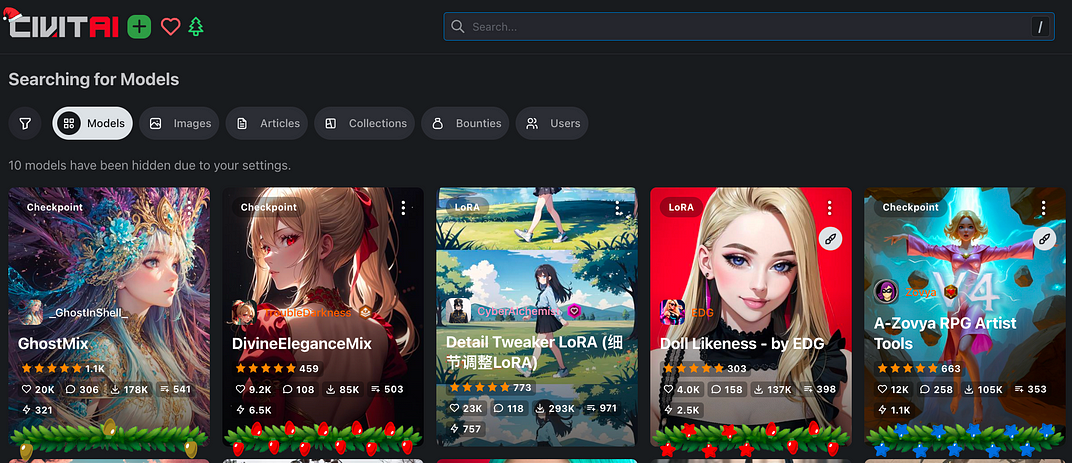
Exploring the Future of LoRa in Stable Diffusion
The future of stable diffusion with LoRa models brings forth new possibilities, including the generation of unique style images and the feel of a character. This exploration involves substantial training power and original artwork usage, along with specific style generation. Additionally, the use of stable diffusion web UI elements and training images paves the way for the evolution of stable diffusion with Lora models.
How Can LoRa Revolutionize Stable Diffusion?
LoRa has the power to revolutionize stable diffusion by utilizing specific concepts and training techniques. With its substantial training power and machine learning capabilities, LoRa models generate original model files and artistic style images. This revolution in stable diffusion is achieved through the use of a specific style, type of model, and comprehensive training power.
Conclusion
In conclusion, LoRa technology plays a crucial role in stable diffusion by enhancing connectivity and improving data transmission. It offers various models like Character LoRa, Style LoRa, and Concept LoRa, each serving a unique purpose in the diffusion process. By following the necessary steps to incorporate LoRa models and understanding the implications of Pose LoRa, Clothing LoRa, and Object LoRa, you can optimize the stability and efficiency of your diffusion system. Case studies have shown the efficacy of LoRa in achieving superior stable diffusion. As we look towards the future, the potential of LoRa to revolutionize stable diffusion is immense. Its continued development and implementation will undoubtedly shape the future landscape of diffusion technology.
Originally published at novita.ai
novita.ai provides Stable Diffusion API and hundreds of fast and cheapest AI image generation APIs for 10,000 models.🎯 Fastest generation in just 2s, Pay-As-You-Go, a minimum of $0.0015 for each standard image, you can add your own models and avoid GPU maintenance. Free to share open-source extensions.
